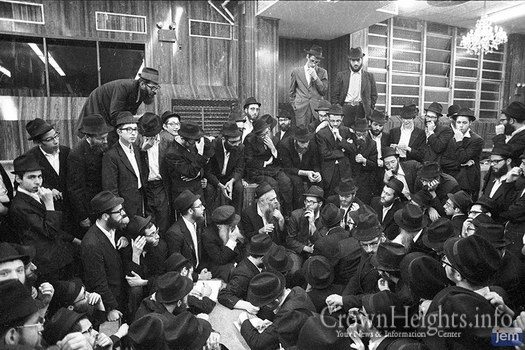
Weekly Story: Staying Focused On What Is Important
Rabbi Sholom DovBer Avtzon
Last week many wrote or spoke about their memories of Reb Yoel and his farbrengens. This week I am posting one of the stories he would often relate at a farbrengen.
However, before I begin I would like to thank all those who contacted me about the posts during the past few weeks. One of them informed me that the thought I paraphrased from the HaKriah V’Hakedusha on the connection between Shema and the Aseres Hadinros was not an original thought; it is mentioned in the Talmud Yerushlmi Berochas chapter 1 Halacha 5. The only thing is that there it shows the connection between the Aseres Hadibros and the first two parshios of Shema, and here I noted that the connection is in the first parsha itself. Additionally, I wrote that it was written by Mr. Levitt, as that is how he identified himself when he came to Rabbi Simpson’s basement to work on the HaKriah V’Hakedusha. However, I was remiss, as he was a tremendous Talmid Chocham and fought valiantly for Kedushas HaTorah etc., so I should have written Rabbi Aharon Hirsch Levitt.
Concerning the Bible Unauthorized, a subsequent edition was edited by Professor Dr. Sternlight under the new title name “In The Beginning,” and he notes that A. H. Moose stands for Aharon Hirsch Levitt, as Moose is the correct translation of Hirsch. So in addition to noting that he was writing under a different name, he was alluding that this is the truth, thus A H Moose when pronounced together is pronounced ehmes. He was stating that he wrote the truth.
Please continue sending in your feedback, as it is greatly appreciated and also helpful.
Now to our featured story.
During the Aseres Yimei Teshuva or sometimes Erev Yom Kippur, the Rov or Maggid would try to bring the community to a remorseful feeling and feel the pain of estrangement from Hashem. One Maggid, used to say the following parable.
There was a king, whose only concern was the well-being of his subjects. He was truly loved by his subjects and they all prayed for him that he should be blessed with a child. After many years of marriage, their prayers were answered and the queen gave birth to a baby princess. In every city, town, and hamlet there was rejoicing because the king was blessed with a child. Everyone was happy as if it was a personal happiness.
As the princess grew up, the citizens took pride in her development and with the thought that there is a continuation to the monarchy.
When she became of age, the king arranged for a suitable match, and once again the citizens all celebrated this milestone. As it was coming closer to the wedding date, the hype was growing, and there were parties planned in every community.
Hearing this story, especially as the maggid embellished it, implanted in the people a feeling of love and happiness for this king.
Then the Maggid continued with the story. A few days before the wedding was to take place, the princess became seriously ill, and everyone prayed for her recovery. It wasn’t just a princess that was ill, it was their own princess. The best doctors made their way to the palace, hoping to be able to find a cure. But alas, their efforts were unsuccessful and she passed away.
Hearing this terrible news, the people broke out in a cry, as they felt that it was their own princess. So vivid had the Maggid described it, that they felt this tremendous association with the King, Queen, and the Princess.
A chossid was in the shul and he noticed a certain Jew whom he thought had the temperament to become a chossid. So he went over to this individual, took the tallis off his head, and whispered, “Why are you crying about this imaginary princess? She was never born, so what do you care if she dies?” The individual was so shaken up by these words, that he lost his bearings; he didn’t know what emotions he should express during his davening.
After Kol Nidrei, he came over to the chossid and angrily said, “I can never be moichel (forgive) you! You destroyed my concentration. I was so confused that I couldn’t pour out my heart to Hashem.”
The chossid replied, “If your concentration was based on an imaginary, non-existent, and false figure, what type of concentration does that create? Let me explain to you, what Yom Kippur is all about.”
Once, when Reb Yoel concluded relating this story, a Jew came in and said, “I used to come to the farbrengens. It was such a pleasure to hear the Rebbe’s geoinis (genius thoughts) as well as seeing how Reb Yoel is focused on listening to him.
Reb Yoel said to the attendees, “If you didn’t understand what the princess represents, now you do. He was by a farbrengen, and was able to understand the Rebbe’s sichos, yet what he was focusing on, is something that has no relevance whatsoever.”
So too, we should realize what is important, focus on that, and disregard everything that takes our concentration away from it.
Rabbi Avtzon is a veteran mechanech and the author of numerous books on the Rebbeim and their chassidim. He can be contacted at avtzonbooks@gmail.com













